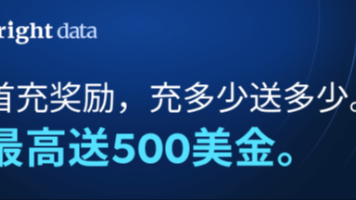java后端对接外部系统(HttpClient HttpPost)
最近遇到一个需求对接外部系统,我们自己的系统发送请求,根据请求内容的不同调用不同的外部系统。举例:我们是做互联网医院的,根据医生开处方选择药店的不同,调用各药店自己的系统,返回结果。
·
前言
最近遇到一个需求对接外部系统,我们自己的系统发送请求,根据请求内容的不同调用不同的外部系统。举例:我们是做互联网医院的,根据医生开处方选择药店的不同,调用各药店自己的系统,返回结果
文章对你的收货
- 可以学到对接外部系统的一些设计
- 构造需要的json
- java项目中HTTPPost请求外部系统或者调用url数据的三种格式
- 文章中的工具类代码可以直接复用
对接步骤
一般外部系统对接,都会给一份对接文档里面有接口url和请求数据以及返回结果的示例
1.先拿postman测试外部接口通不通(如图:外部系统文档中url和body)
2.postman测通以后,项目中编写请求代码,并测试
3.把外部系统的返回结果,格式化成本系统的结果集
设计思路
低耦合:本系统的类和外部系统分开,如果业务发生变化,只需修改中间类的实现就可以了。
构造json
json构造对应格式
步骤:类转换json字符串 ,json字符串在转换成Json对象
类转换json过程中,类中属性名定义的什么名称,转换完json对应的key就是什么
前置类
@Data
public class School {
private String name;
private String address;
private List<Teacher> teacherList;
}
@Data
public class Teacher {
private String name;
private Integer age;
private String phone;
public Teacher(String name, Integer age, String phone) {
this.name = name;
this.age = age;
this.phone = phone;
}
}
只绑定类的属性

/**
* json构造:只绑定类的属性
*/
@Test
public void test2(){
Teacher teacher=new Teacher("张三",28,"1827777888");
String jsonStr = JSONObject.toJSONString(teacher);
JSONObject jsonObjectEntity = JSONObject.parseObject(jsonStr);
JSONObject jsonObject=new JSONObject();
jsonObject.put("record",jsonObjectEntity);
System.out.println(jsonObject.toString());
//{"record":{"phone":"18279997252","name":"张三","age":28}}
}
json 构造成数组list格式

/**
* json构造:构造list
*/
@Test
public void test3(){
List<Teacher> list=new ArrayList<>();
Teacher teacher=new Teacher("张三",28,"1827777888");
Teacher teacher2=new Teacher("李四",22,"18211112222");
list.add(teacher);list.add(teacher2);
String jsonStr = JSONObject.toJSONString(list);
JSONArray objects = JSONArray.parseArray(jsonStr);
JSONObject jsonObject=new JSONObject();
jsonObject.put("recordList",objects);
System.out.println(jsonObject.toString());
//{"recordList":[{"phone":"1827777888","name":"张三","age":28},{"phone":"18211112222","name":"李四","age":22}]}
}

/**
* json构造:类中包含list
*/
@Test
public void test4(){
School school=new School();
school.setName("清华大学");
school.setAddress("北京海淀");
List<Teacher> list=new ArrayList<>();
Teacher teacher=new Teacher("张三",28,"1827777888");
Teacher teacher2=new Teacher("李四",22,"18211112222");
list.add(teacher);list.add(teacher2);
school.setTeacherList(list);
String jsonStr = JSONObject.toJSONString(school);
JSONObject jsonObjectSchool = JSONObject.parseObject(jsonStr);
JSONObject jsonObject=new JSONObject();
jsonObject.put("record",jsonObjectSchool);
System.out.println(jsonObject.toString());
//{"record":{"address":"北京海淀","name":"清华大学","teacherList":[{"phone":"1827777888","name":"张三","age":28},{"phone":"18211112222","name":"李四","age":22}]}}
}
list类中包含list

/**
* json构造:list类中包含list
*/
@Test
public void test5(){
School school=new School();
school.setName("清华大学");
school.setAddress("北京海淀");
List<Teacher> list=new ArrayList<>();
Teacher teacher=new Teacher("张三",28,"1827777888");
Teacher teacher2=new Teacher("李四",22,"18211112222");
list.add(teacher);list.add(teacher2);
school.setTeacherList(list);
School school2=new School();
school2.setName("北京大学");
school2.setAddress("北京海淀");
List<Teacher> list2=new ArrayList<>();
Teacher teacher3=new Teacher("王五",33,"1827777888");
Teacher teacher4=new Teacher("刘六",40,"18211112222");
list2.add(teacher3);list2.add(teacher4);
school2.setTeacherList(list2);
List<School> listSchool=new ArrayList<>();
listSchool.add(school);listSchool.add(school2);
String jsonString = JSONObject.toJSONString(listSchool);
JSONArray objects = JSONArray.parseArray(jsonString);
JSONObject jsonObjectReult=new JSONObject();
jsonObjectReult.put("schooleList",objects);
System.out.println(jsonObjectReult.toString());
//{"schooleList":[{"address":"北京海淀","name":"清华大学","teacherList":[{"phone":"1827777888","name":"张三","age":28},{"phone":"18211112222","name":"李四","age":22}]},{"address":"北京海淀","name":"北京大学","teacherList":[{"phone":"1827777888","name":"王五","age":33},{"phone":"18211112222","name":"刘六","age":40}]}]}
}
//会吧实体类中为空的部分忽略掉
String jsonString = JSONObject.toJSONString(实体类);
//{"address":"北京市海淀区北坞嘉园","age":"18","datesjc":1641560533162,"name":"测试名称","sex":"男"}
//不忽略为空部分,完整转换
String jsonString2 = JSONObject.toJSONString(实体类, SerializerFeature.WriteMapNullValue);
//{"address":"北京市海淀区北坞嘉园","age":"18","datesjc":1641560628074,"money":null,"name":"测试名称","note_seq":null,"salary":null,"sex":"男","userCourses":null}
HttpPost请求数据的三种格式
外部系统的请求格式有四种:
- 第一种get请求
- 第二种post请求 json格式的
- 第三种post请求 form-data表单格式
- 第四种post请求 x-www-form-urlencoded格式
依赖
<!-- httpclient请求依赖 -->
<dependency>
<groupId>org.apache.httpcomponents</groupId>
<artifactId>httpclient</artifactId>
<version>4.5.7</version>
</dependency>
<!-- 阿里JSON解析器 -->
<dependency>
<groupId>com.alibaba</groupId>
<artifactId>fastjson</artifactId>
<version>1.2.76</version>
</dependency>
构造json示例
JSONObject jsonObject =new JSONObject();
String hisPrescriptionInifoVoStr = JSONObject.toJSONString(hisPrescriptionInifoVo);
JSONObject hisPrescriptionInifoVoJson = JSONObject.parseObject(hisPrescriptionInifoVoStr);
jsonObject.put("record",hisPrescriptionInifoVoJson);
String conditionListStr = JSONObject.toJSONString(conditionList);
JSONArray conditionListJsonArray = JSONObject.parseArray(conditionListStr);
jsonObject.put("conditionList",conditionListJsonArray);
String paymentVoListStr = JSONObject.toJSONString(paymentVoList);
JSONArray paymentVoListJsonArray = JSONObject.parseArray(paymentVoListStr);
jsonObject.put("paymentList",paymentVoListJsonArray);
正常的post请求json数据格式(如图)

//请求内容转换为 json数据字符串 (构造json字符串看上面示例)
String body= jsonObject.toString();
//创建一个http连接
CloseableHttpClient client = HttpClients.createDefault();
//创建Httppost请求
HttpPost httpPost = new HttpPost("http://175.33.10/hisApi/saveRecipeRecord?apiId=hh4444");
//添加头部
httpPost.addHeader("Content-Type", "application/json");
//请求内容格式化
httpPost.setEntity(new StringEntity(body, "utf-8"));
//结果返回response
CloseableHttpResponse response = null;
//请求流返回内容读取
BufferedReader reader = null;
//返回值格式化
StringBuffer responseString = null;
try {
//发起请求
response = client.execute(httpPost);
//判断识别码200说明请求连接成功
if (response.getStatusLine().getStatusCode() == 200) {
reader = new BufferedReader(new InputStreamReader(
response.getEntity().getContent()));
String inputLine;
responseString = new StringBuffer();
while ((inputLine = reader.readLine()) != null) {
responseString.append(inputLine);
}
}
} catch (Exception e) {
} finally {
if (client != null) {
try {
client.close();
} catch (IOException e) {
e.printStackTrace();
}
}
if (response != null) {
try {
response.close();
} catch (IOException e) {
e.printStackTrace();
}
}
}
//返回结果转换为字符串
String reultStr = responseString.toString();
//返回结果转换为json对象
JSONObject jsonObjectData = JSONObject.parseObject(reultStr);
//返回值判断根据接口文档判断按个值是成功的标志 ,再用本系统结果集包装类R包装返回值给本系统用
if(jsonObjectData.getString("success").contains("1")){
return R.ok();
}else{
return R.error(responseString.toString());
}

代码请求思路: 这种表单格式的,把 表单的值都放到 url连接中,代码示例如下:
//请求内容转换为 json数据字符串 (构造json字符串看上面示例)
String body= jsonObject.toString();
//因为body有中文所以要 设置utf-8
String encode = URLEncoder.encode(body, "UTF-8");
CloseableHttpClient client = HttpClients.createDefault();
String tou="?client=4b9d92e8078967ae7069919793c45131&format=json&nonce=5×tamp=1153463&signature=woith234jhsehhsdf¬es="+encode;
HttpPost httpPost = new HttpPost("http://yyf.woxu.com:6566/order/import-template/upload-prescription"+tou);
httpPost.addHeader("Content-Type", "application/json");
//结果返回response
CloseableHttpResponse response = null;
//请求流返回内容读取
BufferedReader reader = null;
//返回值格式化
StringBuffer responseString = null;
try {
//发起请求
response = client.execute(httpPost);
//判断识别码200说明请求连接成功
if (response.getStatusLine().getStatusCode() == 200) {
reader = new BufferedReader(new InputStreamReader(
response.getEntity().getContent()));
String inputLine;
responseString = new StringBuffer();
while ((inputLine = reader.readLine()) != null) {
responseString.append(inputLine);
}
}
} catch (Exception e) {
} finally {
if (client != null) {
try {
client.close();
} catch (IOException e) {
e.printStackTrace();
}
}
if (response != null) {
try {
response.close();
} catch (IOException e) {
e.printStackTrace();
}
}
}
//返回结果转换为字符串
String reultStr = responseString.toString();
//返回结果转换为json对象
JSONObject jsonObjectData = JSONObject.parseObject(reultStr);
//返回值判断根据接口文档判断按个值是成功的标志 ,再用本系统结果集包装类R包装返回值给本系统用
if(jsonObjectData.getString("success").contains("1")){
return R.ok();
}else{
return R.error(responseString.toString());
}


//请求内容转换为 json数据字符串 (构造json字符串看上面示例)
String body= jsonObject.toString();
CloseableHttpClient client = HttpClients.createDefault();
HttpPost httpPost = new HttpPost(“url地址”);
httpPost.addHeader("Content-Type", "application/x-www-form-urlencoded");
//============== 改造成 x-www-form-urlencoded 请求格式
SortedMap<String,String> sortedMap = null ;
sortedMap = new TreeMap<String,String>() ; //通过子类实例化接口对象
sortedMap.put("jsondhy", body);//body绑定到map上 key为jsondhy就是外部系统要求的key
//遍历map的值
List<NameValuePair> params = new ArrayList<>();
if (!sortedMap.isEmpty()) {
Set<Map.Entry<String, String>> entries = sortedMap.entrySet();
for (Map.Entry<String, String> parameter : entries) {
BasicNameValuePair basicNameValuePair = new BasicNameValuePair(parameter.getKey(), parameter.getValue());
params.add(basicNameValuePair);
}
}
try {
httpPost.setEntity(new UrlEncodedFormEntity(params, "UTF-8"));
} catch (UnsupportedEncodingException e) {
e.printStackTrace();
}
//结果返回response
CloseableHttpResponse response = null;
//请求流返回内容读取
BufferedReader reader = null;
//返回值格式化
StringBuffer responseString = null;
try {
//发起请求
response = client.execute(httpPost);
//判断识别码200说明请求连接成功
if (response.getStatusLine().getStatusCode() == 200) {
reader = new BufferedReader(new InputStreamReader(
response.getEntity().getContent()));
String inputLine;
responseString = new StringBuffer();
while ((inputLine = reader.readLine()) != null) {
responseString.append(inputLine);
}
}
} catch (Exception e) {
} finally {
if (client != null) {
try {
client.close();
} catch (IOException e) {
e.printStackTrace();
}
}
if (response != null) {
try {
response.close();
} catch (IOException e) {
e.printStackTrace();
}
}
}
//返回结果转换为字符串
String reultStr = responseString.toString();
//返回结果转换为json对象
JSONObject jsonObjectData = JSONObject.parseObject(reultStr);
//返回值判断根据接口文档判断按个值是成功的标志 ,再用本系统结果集包装类R包装返回值给本系统用
if(jsonObjectData.getString("success").contains("1")){
return R.ok();
}else{
return R.error(responseString.toString());
}
get请求
get请求简单 把httppost换成httpget就可以了
HttpGet httpGet = new HttpGet(uri地址以及参数);
更多推荐
 已为社区贡献1条内容
已为社区贡献1条内容











所有评论(0)